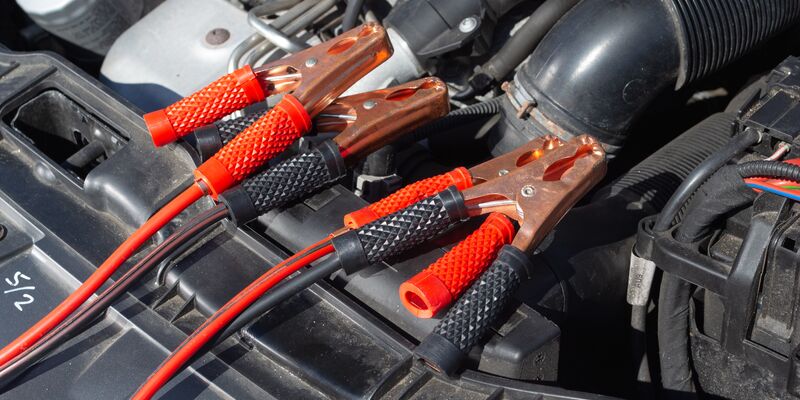
Credit: https://unsplash.com/photos/ovGrEUgrkyE
Maintaining your car battery is crucial for reliable performance, extended lifespan, and prevention of unexpected battery failures, ensuring your vehicle starts when you need it and avoiding costly replacements or inconveniences due to a dead battery.
Ways To Maintain Your Car’s Battery
Regularly inspect the battery
Check your battery for any signs of damage, corrosion, or loose connections. If you notice any issues, address them promptly. Corroded terminals can be cleaned with a mixture of baking soda and water, followed by a thorough rinse with clean water.
Keep it clean
Dirt and debris on the battery can cause drainage and reduce its performance. Keep the battery clean by wiping it down regularly with a clean, damp cloth. Avoid using excessive water or cleaning agents that can damage the battery.
Drive your car regularly
If you let your car sit idle for extended periods, it can lead to battery drain. Regularly driving your car helps keep the battery charged and prevents it from losing charge due to inactivity.
Avoid overloading the electrical system
Excessive use of electrical accessories such as lights, radio, air conditioning, etc., can put a strain on the battery and drain its power. Limit the use of these accessories when the engine is off or the car is idling.
Check the charging system
Have your vehicle's charging system, including the alternator, checked regularly by a professional mechanic. A faulty charging system can result in an undercharged or overcharged battery, leading to premature battery failure.

Credit: https://pixabay.com/photos/jumper-cables-battery-engine-car-926308/
Turn off lights and electronics when not in use
Make sure to turn off all lights, electronics, and accessories when the car is not in use. Leaving them on for an extended period can drain the battery.
Avoid extreme temperatures
Extreme temperatures, both hot and cold, can affect the performance and lifespan of your car's battery. If possible, park your vehicle in a covered or shaded area during extreme weather conditions.
Consider using a battery maintainer or trickle charger
If you don't drive your car regularly or if you park it for an extended period, consider using a battery maintainer or trickle charger to keep the battery charged. These devices provide a slow, steady charge and help prevent battery drain.
Replace an old or weak battery
If your car's battery is old or not holding a charge well, it may be time to replace it. Consult your vehicle's owner's manual or seek advice from a qualified mechanic for the right type and size of battery for your car.
How To Change Your Car Battery

Credit: https://pixabay.com/photos/signs-safety-danger-risk-car-791333/
Changing a car battery can seem daunting, but with the right tools and precautions, it can be a relatively straightforward process. Here's a step-by-step guide on how to change your car's battery:
Note: Before attempting to change your car's battery, it's important to wear appropriate safety gear, such as gloves and goggles, and follow your vehicle's owner's manual for specific instructions, as battery placement and removal can vary among different car makes and models.
Tools and materials needed:
- Replacement battery (make sure it's the correct type and size for your vehicle)
- Adjustable wrench or socket wrenchBattery cleaning solution or a mixture of baking soda and water
- Wire brush or battery cleaning brush
- Clean cloth
- Battery terminal cleaner or a wire brush
- Battery terminal protectant spray (optional)
Step 1: Preparation
- Park your car on a flat, level surface and engage the parking brake.
- Turn off the engine, lights, and all electronics.
- Open the bonnet of your car and locate the battery.
- Identify the positive (+) and negative (-) terminals on the battery.
Step 2: Removing the old battery
- Use a wrench to loosen and remove the negative (-) terminal clamp from the battery.
Typically, the negative terminal is marked with a black or "-" sign. - Repeat the process to remove the positive (+) terminal clamp from the battery.
- Typically, the positive terminal is marked with a red or "+" sign.
- Carefully lift the old battery out of the battery tray, taking care not to tip it over or drop it.
Step 3: Cleaning the battery terminals and tray
- Inspect the battery tray and remove any debris or dirt.
- Mix a solution of water and baking soda or use a battery cleaning solution to clean the battery terminals, clamps, and tray. Use a wire brush or battery cleaning brush to remove any corrosion or buildup.
- Rinse the battery terminals, clamps, and tray with clean water and dry them with a clean cloth.
- Consider applying a battery terminal protectant spray to the clean terminals to help prevent future corrosion (optional).
Step 4: Installing the new battery
- Carefully place the new battery into the battery tray, making sure it is secure and properly aligned.
- Connect the positive (+) terminal clamp to the positive (+) terminal of the battery and tighten it securely with a wrench.
- Connect the negative (-) terminal clamp to the negative (-) terminal of the battery and tighten it securely with a wrench.
Step 5: Final steps
- Double-check that all connections are tight and secure, and there is no debris or dirt around the battery.
- Close the bonnet of your car.
- Start your car to confirm that the new battery is working properly.
- Dispose of the old battery at a recycling centre or a battery retailer that accepts used batteries in accordance with local regulations.
That's it! You have successfully changed your car's battery. Remember to follow proper safety precautions and consult your vehicle's owner's manual for specific instructions. If you're not comfortable performing this task yourself, it's best to seek assistance from a qualified mechanic.
For more tips and advice, check out our blog or give us a follow on Instagram and Facebook. Looking to sell your car? Enter your reg and mileage below and start your free, no-obligation quote today!




